Mesut Özil is one of the most controversial players at Arsenal. While Özil was a key player of the Arsenal side under the reigns of Arsène Wenger, the midfielder did not play an important role under following manager Unai Emery. When Mikel Arteta took over in December (2019), however, Özil utilised his opportunity and currently thrives in the new system.
Our tactical analysis takes a closer look at Özil’s role within Arteta’s system and why he is of such big importance for this Arsenal side again. In the form of a scout report, we examine Özil’s strengths and how they contribute to the revitalisation of Arsenal.
Özil’s role within Arteta’s system
Since Mikel Arteta took over Arsenal, they mainly played in a 4-2-3-1 formation. In this system, Arteta lined up Özil as the playmaker behind the single attacker. In front of a double pivot at the base of the midfield, Özil is tasked to provide offensive passing options or carry the ball upfield. Below, the 4-2-3-1 formation of Arsenal in their win over Manchester United is displayed. To complement Özil, a strong hold-up striker in Alexandre Lacazette is lined up front between two pacy wingers in Pierre-Emerick Aubameyang and Nicolas Pépé.
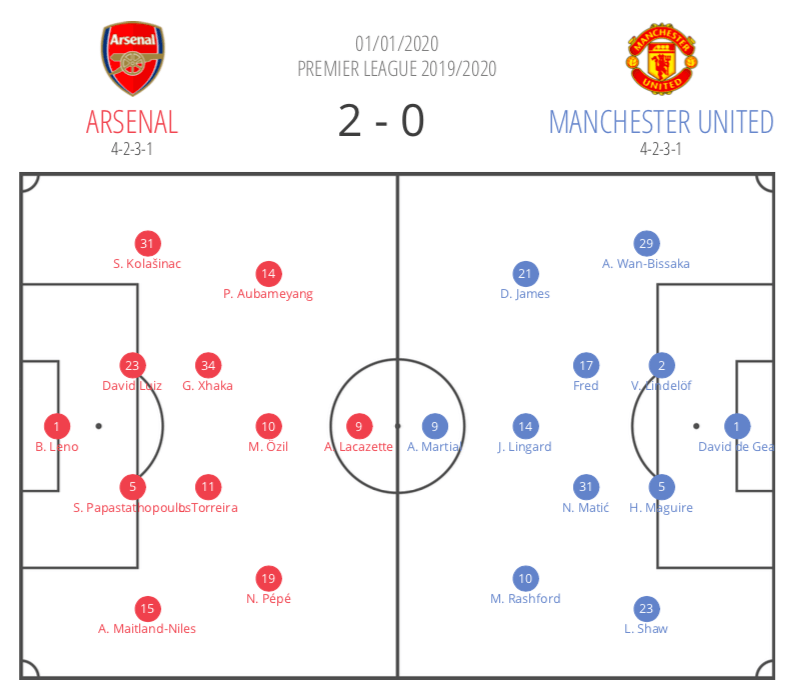
Playing as a central advanced midfielder, Özil likes to drift towards either side of the pitch. Nevertheless, he seems to prefer the right side. The preference can be seen when taking a look at his heatmap which is displayed below. Besides this, the heatmap also shows that the playmaker is mainly positioned around the opposition box to provide the attacking trio with passes or crosses.
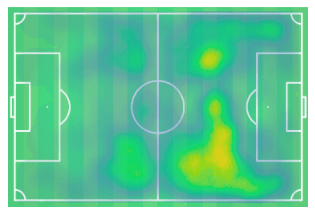
The reason why Özil prefers the right side is simple. From the right, he is able to utilise his stronger left foot in order to progress the ball diagonally up the pitch. Mainly attacking down this side allows him to carry the ball into central areas with his left foot while already being prepared to play a through pass towards one of Arsenal’s fast attackers.
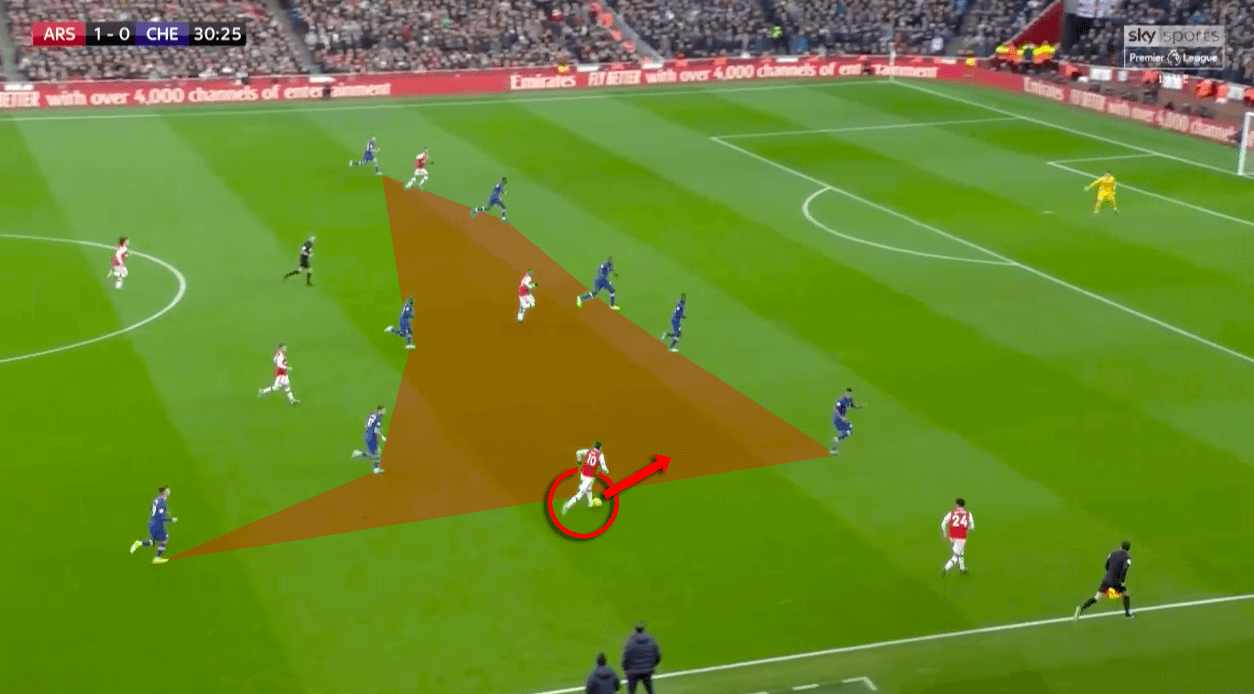
Different to his inside movements when receiving the ball on the right, Özil prefers to stay wider on the left side of the pitch. From this area, Özil can combine with the left winger and full-back to get a player into a position to cross. On this side of the pitch, Özil himself can send in a cross with his left foot.
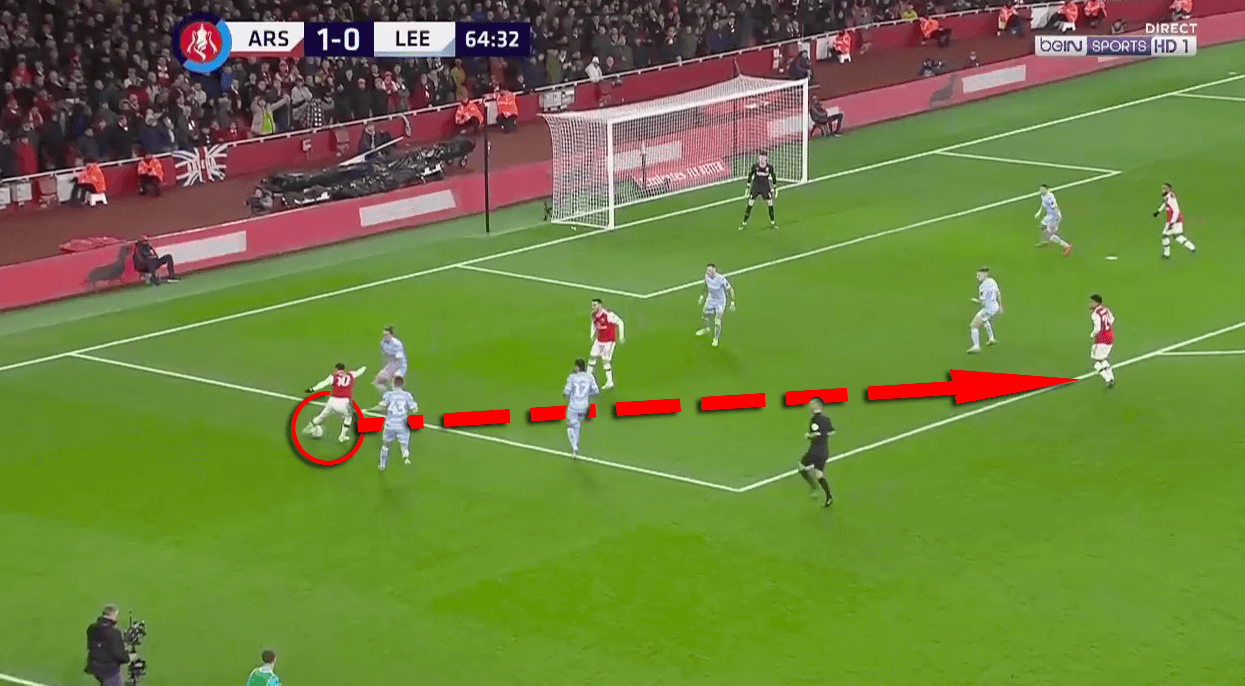
How Özil supports Arsenal’s build-up play
One of the main aspects of Arteta’s tactics is to cleanly progress up the pitch. Therefore, a well structured build-up phase is required.
Özil’s main job during the build-up phase is to provide a passing option behind the opposition midfield line to enable line-breaking passes. If the centre-backs carry the ball upfield while having no clear passing option though, Özil drops in front of the opposition midfield. By executing these runs with the right timing, the opposition midfielders can only react and follow Özil instead of cutting off the passing lane. Arsenal’s midfielder drops exactly when the central defender is under pressure and ready to play the pass. Therefore, it does not take long for the pass to be played and both, pass and off-ball movement, are well timed and coordinated.
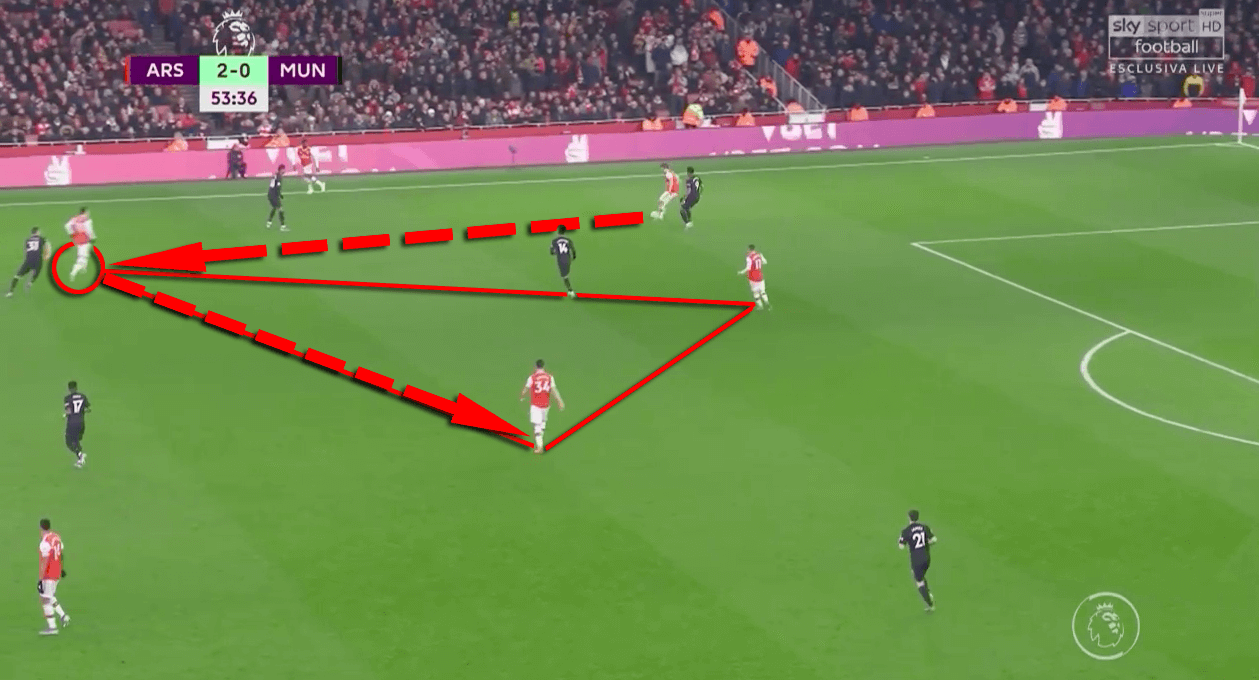
Therewith, Özil offers a simple passing option and, at the same time, moves into a position to connect with the double pivot. With a simple lay-off, Özil then plays to either of the two defensive midfielders. That way, Arsenal successfully outplayed the first pressing line. Moreover, it opens up the opportunity for Arsenal to switch sides or to play through the centre towards their striker.
In general, Özil’s passing abilities and off-ball movement are advantageous for Arteta’s favoured short passing style of play.
Özil’s attacking style
Within the last third or in counter-attacking moments, Özil does not possess the pace to make threatening runs into the box. Instead, he will stay in front of the opposition backline to identify gaps within the opposition defensive department. When he gets the ball, he often seems to already have several options in mind. Depending on the actions of teammates and opponents he can then make the best decision.
Furthermore, it is difficult to steal Özil the ball. His body feints are difficult to read for the opposition defenders. Even with his back towards the opposition goal, he is often capable of playing forward passes. As the image below shows, Özil breaks the opposition midfield with a body feint and a following pass into the final third.
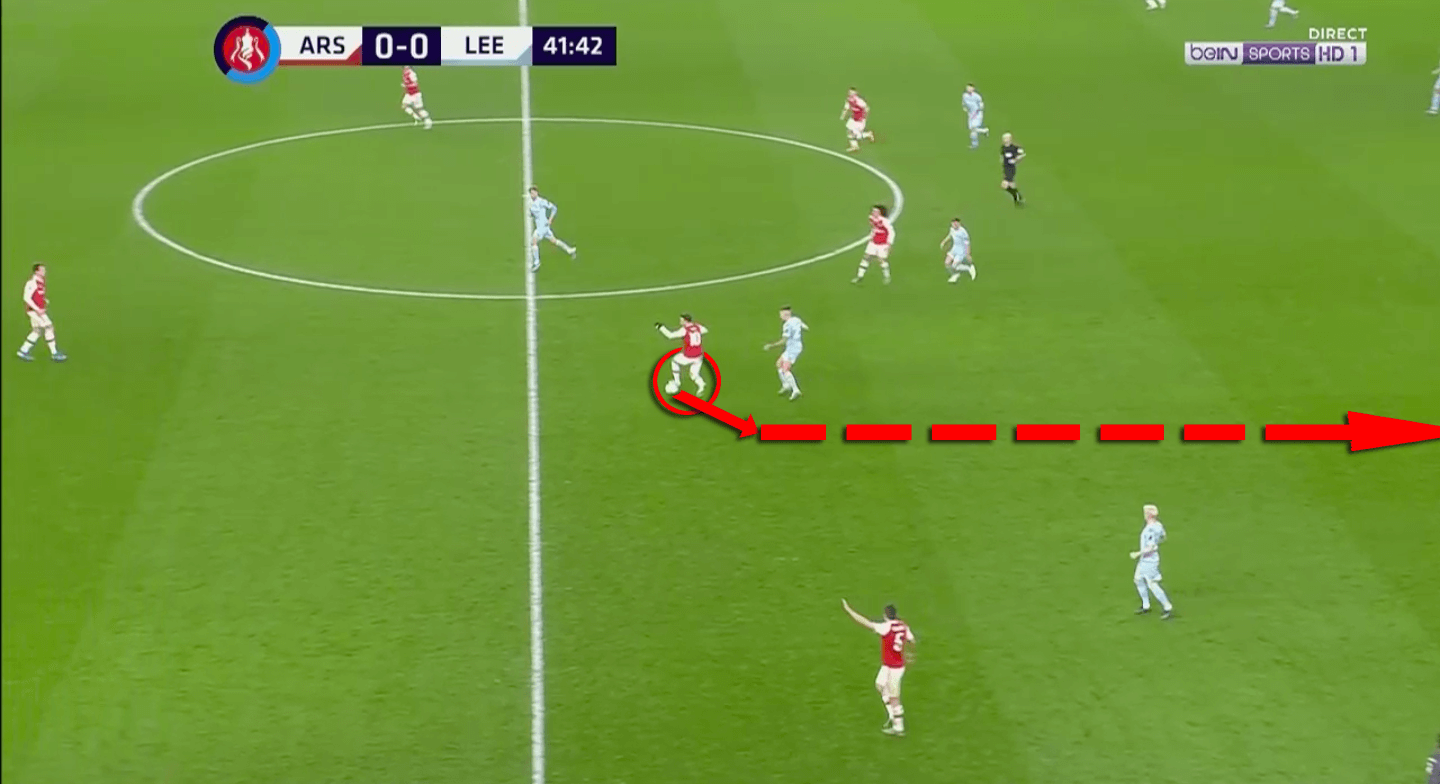
Moreover, Özil’s vision allows him to play no-look passes after having opened up passing lanes with his deceptive glances. With following through passes, Özil is capable of creating promising chances for his side.
Özil’s defensive actions
Often Özil had been criticised for a missing effort out of possession. Under new coach Arteta, however, the midfielder also impressed during the defensive phase of the game.
One of Arteta’s implemented features is counter-pressing. Depending on the position of the ball and the teams’ shape, Arsenal situationally execute a counter-pressing to quickly regain possession after they lost the ball. Due to his central position, Özil obviously plays an important role in these moments.
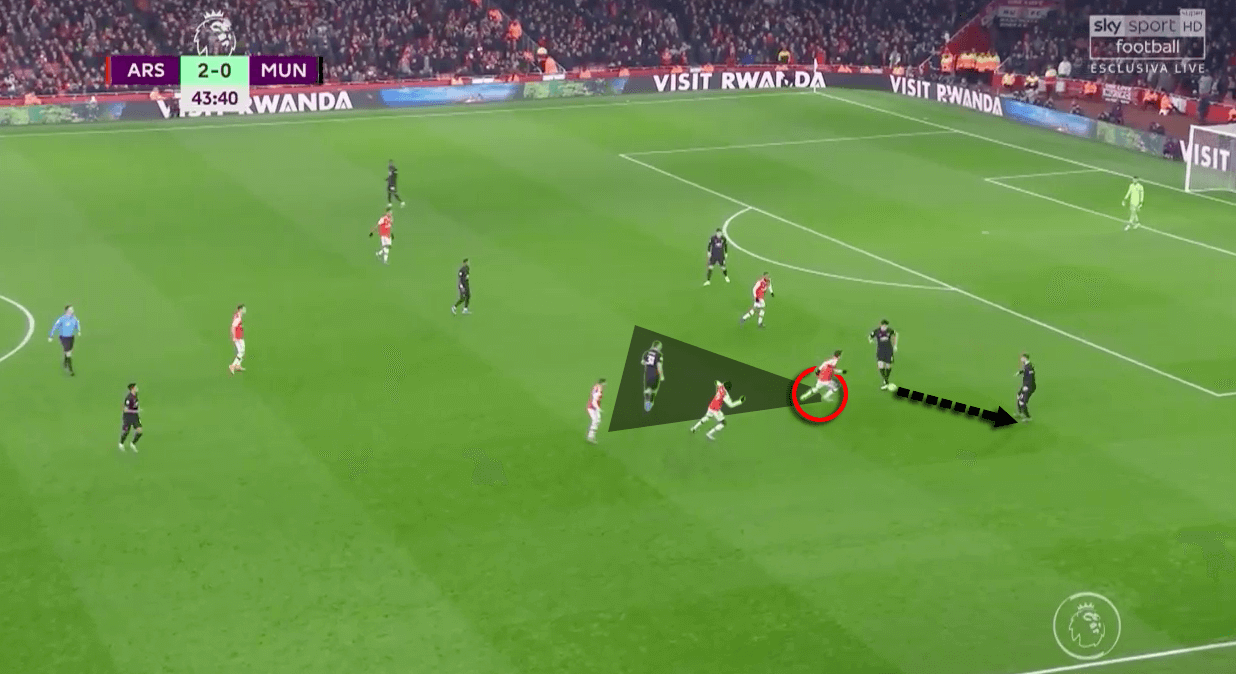
Furthermore, when Arsenal start their pressing (mostly from a mid-block) in their 4-2-3-1 formation, Özil has to prevent the opposition from playing into midfield while Arsenal’s striker presses the opposition centre-backs. Therefore, Özil often uses his cover-shadow and intelligently cuts off passing options.
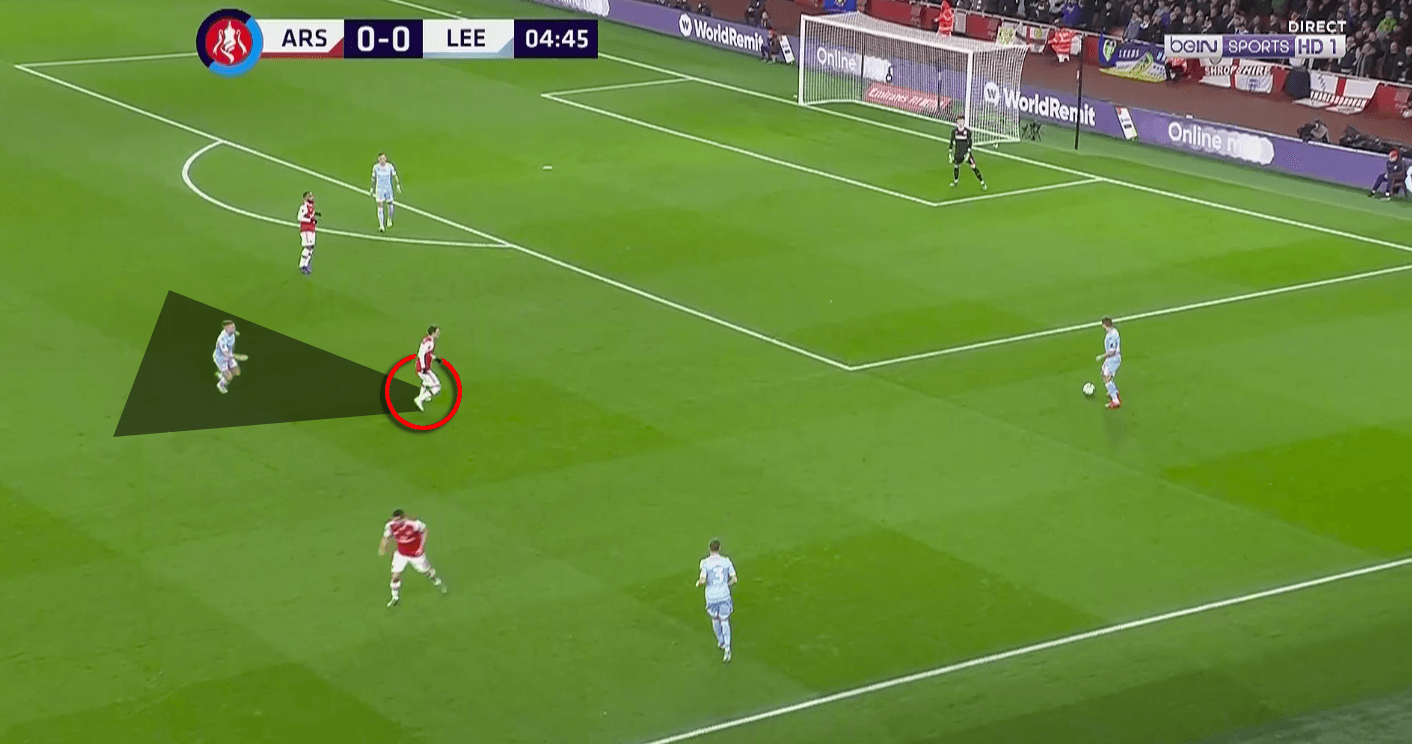
But not only when pressing from the front, Özil has shown improvement. Also when the opposition were capable to progress up the flanks, Özil’s backward pressing leaves little to be desired. By pressing backwards, he could often outnumber the opposition full-back or winger with the help of Arsenal’s wide players as well as the ball near centre-back.
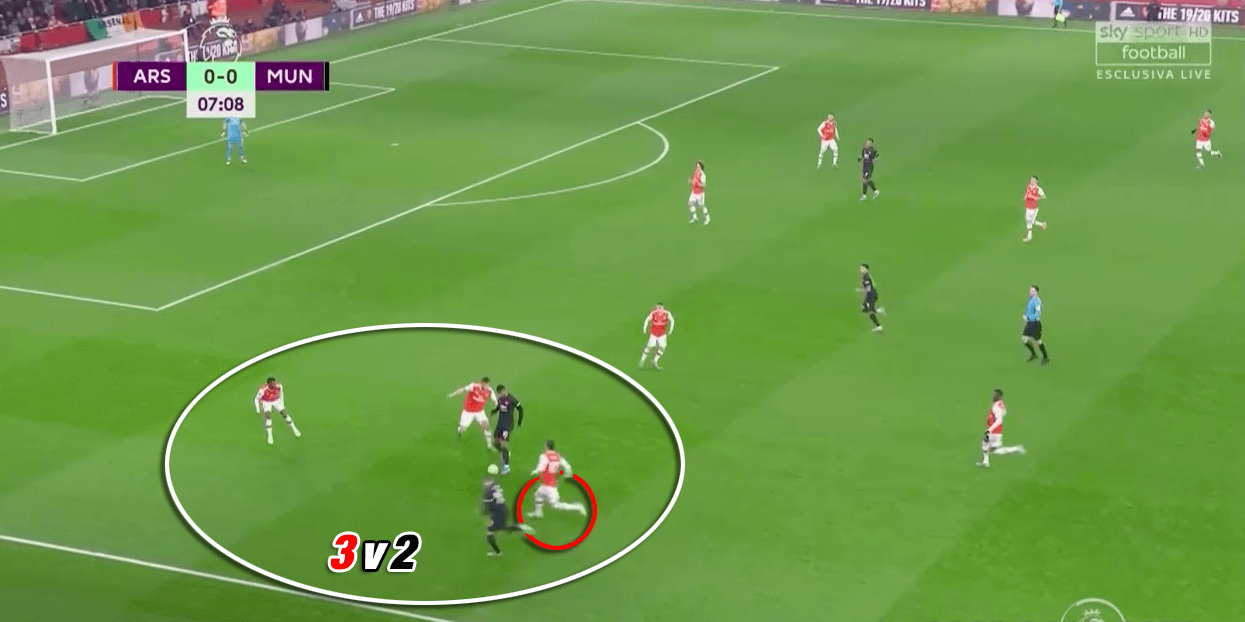
Conclusion
All in all, it is clear that Mesut Özil’s rise in performance was vital for Arsenal’s recent success. And, as shown in our analysis, Mikel Arteta seems to understand how to utilise Özil’s strengths. The playmaker has got a positive impact on the build-up play as well as the chance creation.
Mesut Özil is definitely one of the, if not the biggest winner of the managerial change. Nevertheless, besides his attacking genius, Özil will need to continue with his defensive efforts to remain of such huge help for his side.




Comments